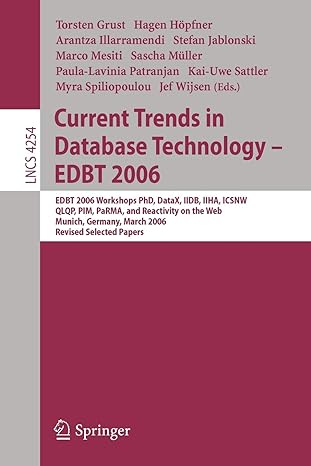
4. (13 marks] More CPU functions Arithmetic multiplication is a common operation that a CPU may need to perform. In HW1 you already implemented a circuit for multiplication of two 2-bit unsigned values, but here we will explore how to construct a modular device that can be used multi- ply values with larger numbers of bits. Logisim provides a multiplier component in its arithmetic library - in this exercise we will construct our own components to perform arithmetic multiplication between two unsigned integer inputs of varying bit widths. We will begin our construction with a 4 x 1 unsigned multiplier, described as follows: 4-bit operand input: A = 03492140 l-bit operand input: B = b 4-bit carry input: C =03020190 . 5-bit product output: P = p.p3p2pipo JA BP TM4x1 a. [4 marks] The output P is produced by the function Ax B+C, where "x" and "+" indicate unsigned arithmetic multiplication and addition. Using a 4-bit full adder, a 4-bit 2 x 1 multiplexer, and any other gate-level components or constant values necessary, design a digital circuit that produces the 5-bit output P as required. NOTE: in producing your design, we advise against creating a truth table as it would have 512 rows!) Instead, try to reason through what a basic product would look like when multiplied by a single bit 0 or 1 value, and then incorporate the carry input. Include your circuit diagram in the space below, and briefly describe your work/justi- fication for your design. 4. (13 marks] More CPU functions Arithmetic multiplication is a common operation that a CPU may need to perform. In HW1 you already implemented a circuit for multiplication of two 2-bit unsigned values, but here we will explore how to construct a modular device that can be used multi- ply values with larger numbers of bits. Logisim provides a multiplier component in its arithmetic library - in this exercise we will construct our own components to perform arithmetic multiplication between two unsigned integer inputs of varying bit widths. We will begin our construction with a 4 x 1 unsigned multiplier, described as follows: 4-bit operand input: A = 03492140 l-bit operand input: B = b 4-bit carry input: C =03020190 . 5-bit product output: P = p.p3p2pipo JA BP TM4x1 a. [4 marks] The output P is produced by the function Ax B+C, where "x" and "+" indicate unsigned arithmetic multiplication and addition. Using a 4-bit full adder, a 4-bit 2 x 1 multiplexer, and any other gate-level components or constant values necessary, design a digital circuit that produces the 5-bit output P as required. NOTE: in producing your design, we advise against creating a truth table as it would have 512 rows!) Instead, try to reason through what a basic product would look like when multiplied by a single bit 0 or 1 value, and then incorporate the carry input. Include your circuit diagram in the space below, and briefly describe your work/justi- fication for your design







